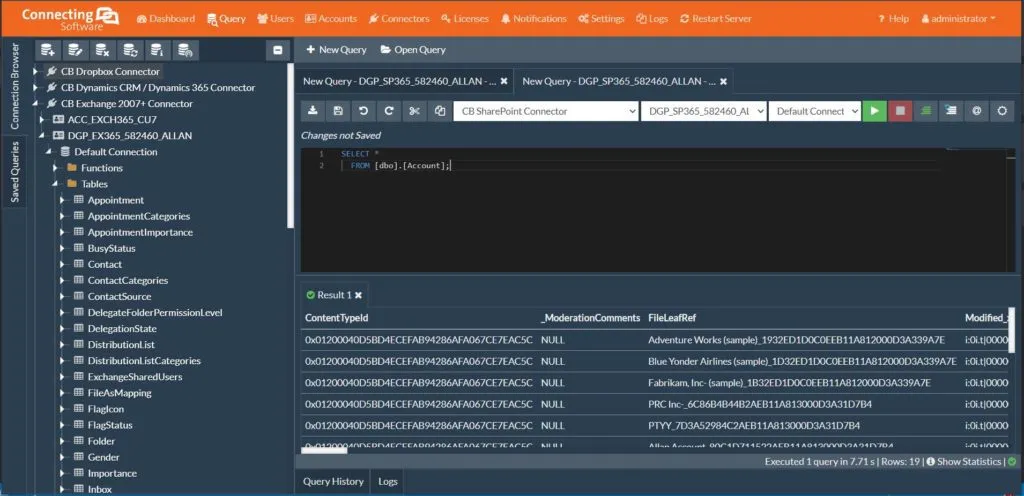Back in my project manager days, I used to struggle when it came to integrating different software. I knew this increased the risk of my project, and that I would have a hard time if there ever was an upgrade of the software we integrated.
I secretly hoped that the customers would say they didn’t need that integration anymore. If only I knew then what I know now!
Many companies struggle to find the right balance between reducing costs and growing their business. For some, it seems like an impossible equation. For others, it’s a welcomed challenge.
One of the most complex variables in this equation for companies and project managers is integrating different applications. It is difficult to estimate time and cost, which is why integration is always a very ambiguous part of contracts or proposals.
The cost of having senior teams to understand all systems that compose a complete project and their different APIs exceeds, in most cases, the value of proving this integration and ends up costing companies a lot of money.
New Platform Integrated the New Digital Ecosystem: The Challenge
I had a client that intended to boost digital media use, both in the acquisition of new customers and in the treatment of current customers (orders), and in parallel to being more present in their customers’ lives with differentiating elements. The new platform integrated the new digital ecosystem.
The project was very interesting, and we were excited to make it all work together. We decided to use Umbraco, a free full-featured open-source Content Management System that uses the .Net development platform, with Merchello (e-commerce). At the time, my client was using Microsoft Dynamics 365 for Customer Relationship Management (CRM). I knew Umbraco wouldn’t have any problems integrating with it, but we would need a specialized team to do it.
Our team was planned following project management best practises and according to my previous experiences. For this e-commerce project, we made new research and took different technical choices. It was the first time for us integrating Dynamics with Umbraco, and we evaluated this as medium risk. After all, everything was Microsoft.
Fast forward to the backlog phase, when we were ready to start development, new change requests arrived. We started negotiations with the client, requesting more focus on new developments and postponing integrations for future dates. Since our risk was medium, we agreed and planned based on that.
As a result, we had our senior developers diverted to Dynamics API tasks and left crucial tasks on the project roadmap to junior colleagues. This resulted in serious difficulties to meet sprint deadlines. We ended up adding more guys to our team, increasing the project costs in order to achieve the project goals.
Other challenges came along with the integration tasks. The client had lots of documents inside Dynamics and that meant other aspects needed to be considered, such as the security of all sensitive documents. I think this is a simple example of how integrations can be unpredictable.
Project Budgeting
Marie Scotto wrote, in 1994, in the Project Management Journal, that a large number of the problems managers are facing in projects can be traced directly to the use of inappropriate budgeting and management techniques on project efforts. Although the engineering and construction worlds have successfully used Project Management for decades, the business world has only recently begun adopting its processes, sometimes without fully understanding them. This lack of understanding can actually increase project costs and decrease the quality of the end product.
The key to effective project management is budgeting. Formal project budgeting differs from traditional functional budgeting, such as tested performance data or the Project Evaluation and Review Technique (PERT), in four fundamental ways: repetitiveness, basis, risk, and budget type.
I agree with Marie Scotto, but we can have all metrics in our mind, and still never be 100% sure of the integration phase’s total costs.
In our project plan, we must assume many requirements that are often ambiguous on contracts and proposals. When systems have to communicate to write or read information, we know we are probably into trouble.

Knowledge is Key
Going back to our project: The client doesn’t have good documentation, and we found a different supplier developed each system. It would not be an easy task, and to make matters worse, we would have a variation of people during the project life cycle. Obviously, we were going to measure everything, but you never know what you’ll really find when you run into a 30 years old legacy application, for example.
Not all project managers have a technical background, and when it comes to integration, everything is unpredictable - even when you are comfortable with the technical details. You can, obviously, have steering meetings and negotiate to have everyone at the steering committee on the same page, but I can say by experience that you’ll lose more than you win if we’re talking about projects with legacy systems. Plus, you must keep in mind that you have to give support and be responsible for the maintenance of everything you touch.
When I found Connect Bridge from Connecting Software and started working with this integration platform, my only thought was: Why I didn’t use this sooner? Connect Bridge could have been helpful for my team and me, as we wouldn’t have had to worry about APIs or backward and forward compatibility. What a difference it would have made!
Connect Bridge is a software integration platform – it allows you to build your custom integration software in any language with much fewer lines of code.
Connect Bridge eliminates the need for using the software API by using standard SQL syntax instead. It uses its connectors to translate the SQL statements into API calls. The connectors are currently available for more than 400 apps, and new connectors are built and launched frequently.

With this platform you gain superpowers and believe me, you just have to plan your project one time. So, I want to show how easy is to integrate different applications and all in just a few clicks.
You can integrate with more and more applications, always the same easy way. Think of the enumerable possibilities for new developments. You can really focus on your business requirements and connect to different systems always with the same team and usual programming language.
Improve Your Steering Decks with Connect Bridge
Do you remember those meetings with Senior Developers to learn the API? Just because you have that steering meeting and you must know the reason why things are not on track?
With Connect Bridge it is easy and as the project manager, you could test and understand for yourself where the integration problems come from. Stop taking your team's time and let them be where you need them. Developing!
Connect Bridge comes with a Web Management Studio (seen in the screenshot above) where you can play with queries, you see your target system as a database. In Connect Bridge Management Studio you have the power in your hands, and you can have more than one connector there.
Takeaway
Connect Bridge is a great help for developers because it gives a giant boost to the integrations needed in the project. But it is also a great help for project managers.
Instead of just taking abstract information to a meeting with the customer and talking about what we can and cannot do, we have the possibility to complement our decks with non-abstract information and manage it without specific technical knowledge. It is like a window opens and from the moment we use this integration platform we are able to speak about integration in the same way as we speak about our business requirements.
No more useless meetings with technical senior resources. Why should have them at meetings that are not supposed to be technical?
If this article comes close to your reality and you have more ideas that are out of the box, please share with me. I will be more than happy to answer any questions you might have, do leave a reply below.
If you're a project manager, read on

Diogo Pereira
Solution Architect & Partner Success Manager at Connecting Software
Author:
I have over 15 years of experience working in product development and sales. In the last years, I have been working as a product owner, leading a cross-functional team and building unique projects.
Do you have any questions or comments about this post or about Connect Bridge? I would love to have your feedback!

Comments 1
Project and resource management tools have the best features to spot resource bottlenecks and insights when to bring more people onto the team, providing visibility into the workloads of the entire portfolio of resources.